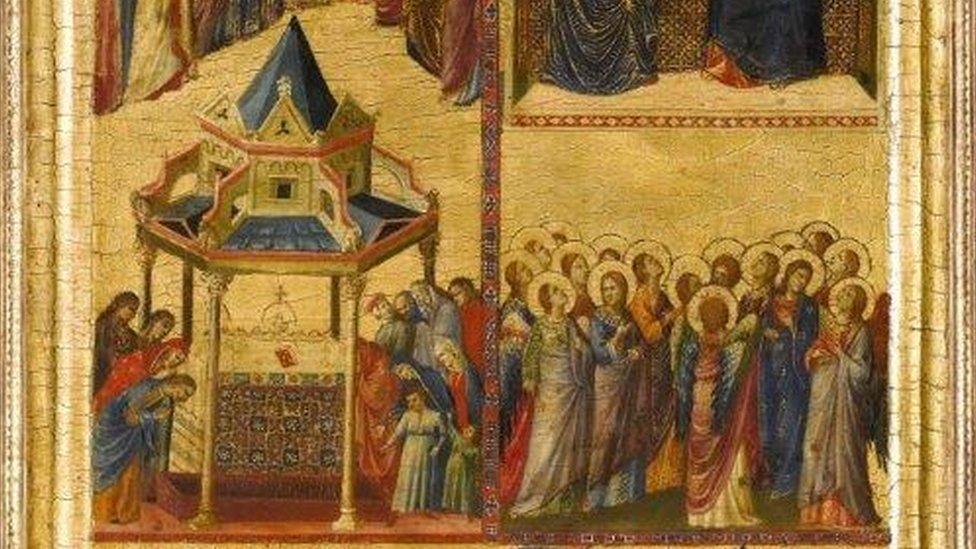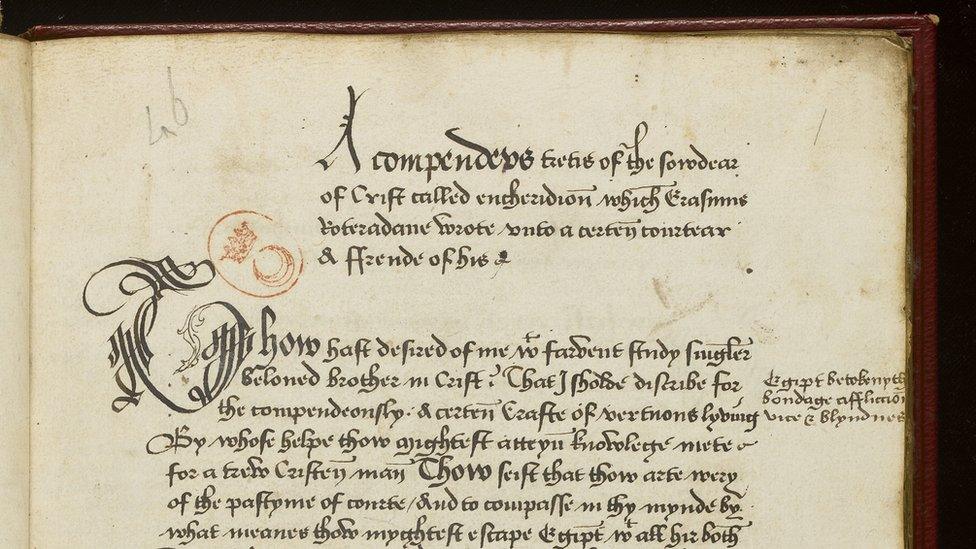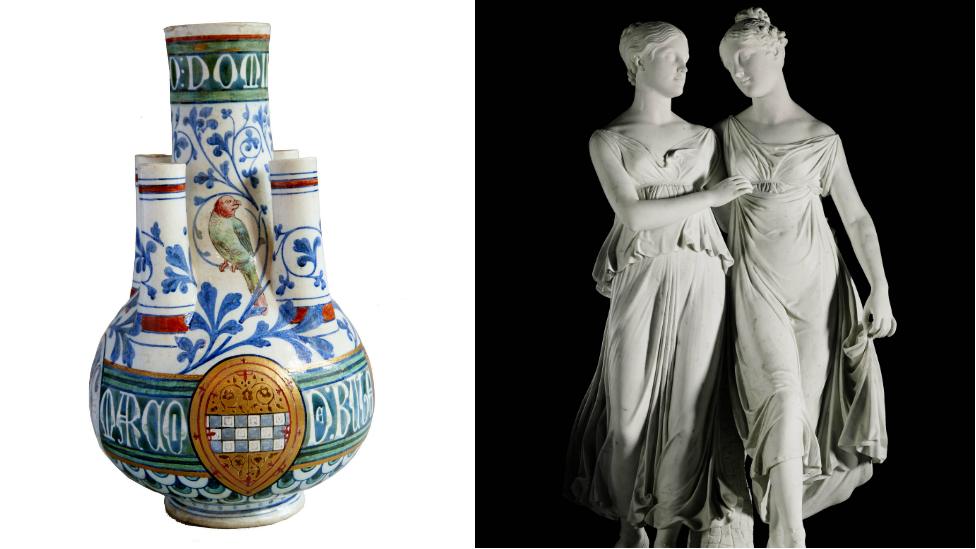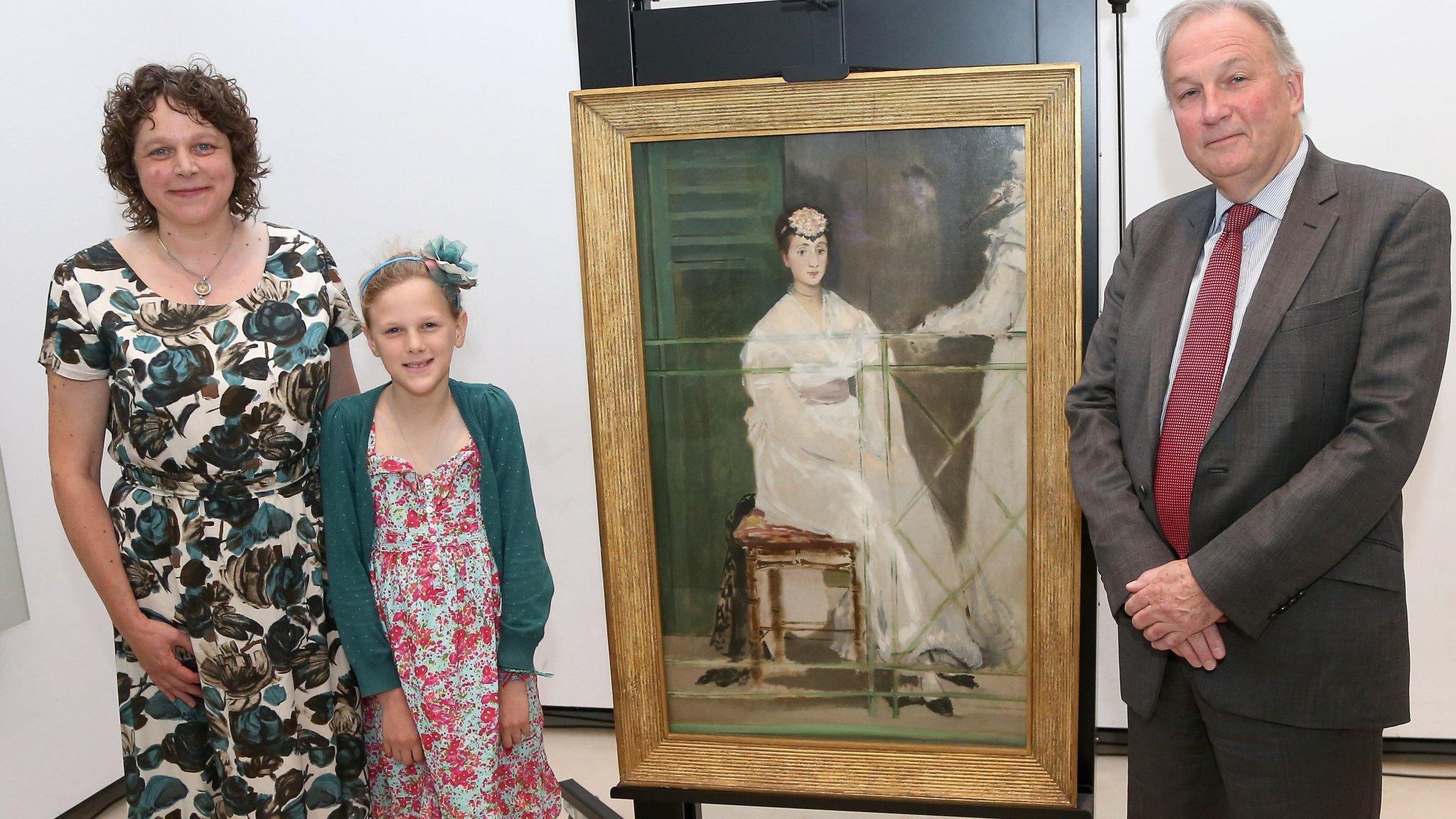Religious diptych worth £5m among 'saved' art works
- Published

The left wing of a diptych by Giovanni da Rimini has been purchased by the National Gallery
The left wing of a 14th Century diptych worth over £5m is among five treasures which have been stopped from leaving the UK in the last year.
The Arts Council England (ACE) list also included a rare 16th Century manuscript and a Victorian vase designed by William Burges.
They were purchased by institutions after the government enforced an export ban, giving them time to raise funds.
ACE chief executive Darren Henley said saving them was of "huge public value".

An English translation of Erasmus's Enchiridion militis Christiani (Handbook of a Christian Knight) was bought by the British Library
If an object is more than 50 years old and requires a licence for export out of the UK, the Reviewing Committee on the Export of Art and Objects of Cultural Interest, managed by ACE, can decide whether the object is of national importance.
Its latest report said between 2014 and 2015, 12 items were referred to the Secretary of State for Culture, Media and Sport, with five being subsequently purchased for collections across the UK by institutions.
The five were:
Left wing of a diptych by Giovanni da Rimini (£5,682,500 - bought by the National Gallery)
The Campbell Sisters dancing a waltz, by Lorenzo Bartolini (£523,800 - bought by the Victoria and Albert Museum and National Galleries Scotland)
English translation of Erasmus's Enchiridion militis Christiani (£242,500 - bought by the British Library)
The Rejlander Album (£82,600 - bought by the National Portrait Gallery)
A William Burges vase from the Summer Smoking Room, Cardiff Castle (£163,000 - bought by the National Museum Wales)
Culture Minister Ed Vaizey said the system "helps us keep as many of our national treasures in the UK as possible".
"It is fantastic that these important artistic, cultural and historical objects will now be in museums and galleries for the public to enjoy for generations to come," he added.

The Burges vase and Bartolini statue were both saved after having export bans imposed
Sir Hayden Phillips, chairman of the reviewing committee, said while it was "right that we celebrate the successes that have been achieved, we cannot be complacent as a number of significant items were not retained".
"This underlines both the continuing need for strong support and for trying to ensure that we make practical improvements to our processes where we can."
- Published18 December 2012
